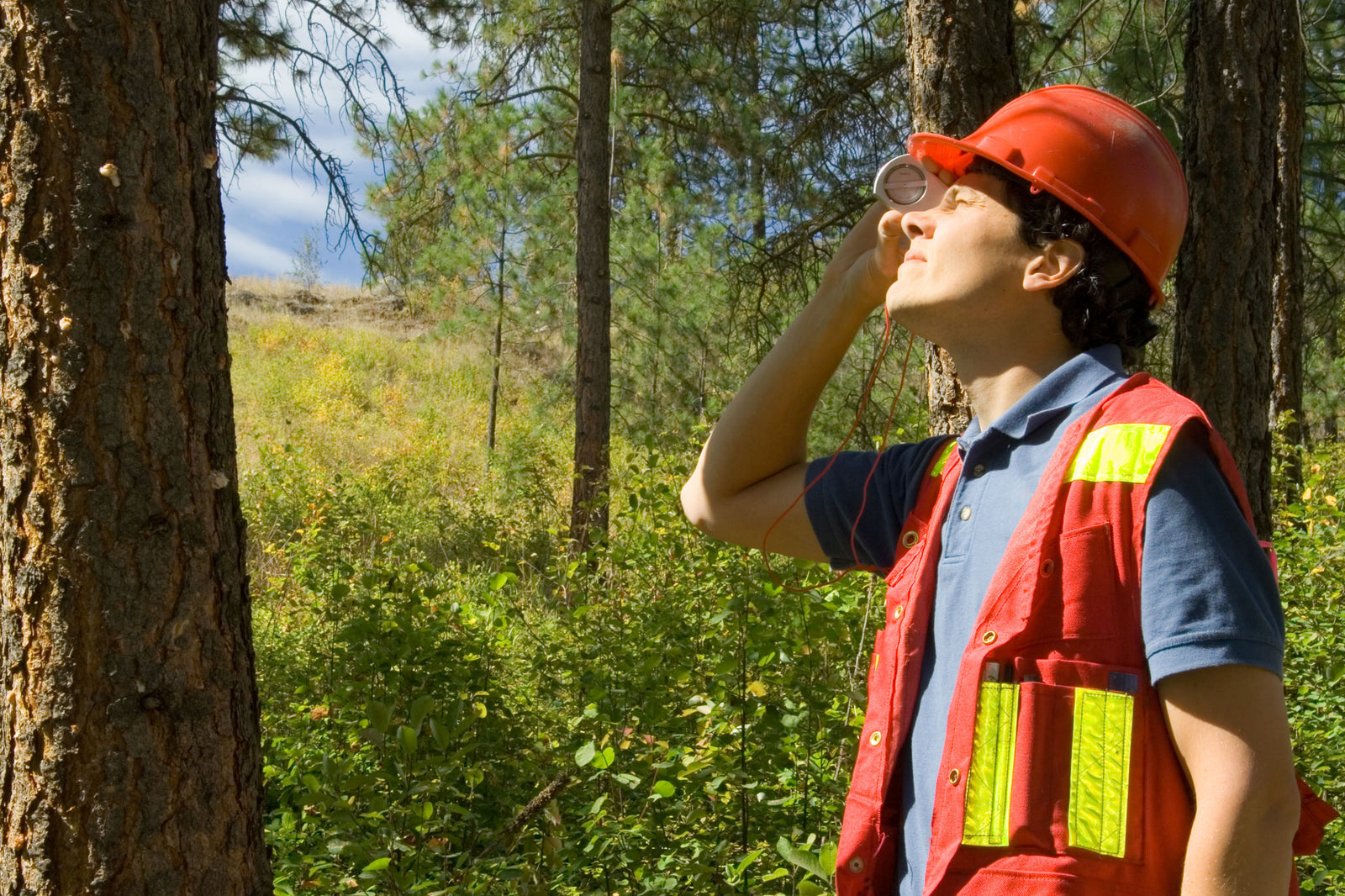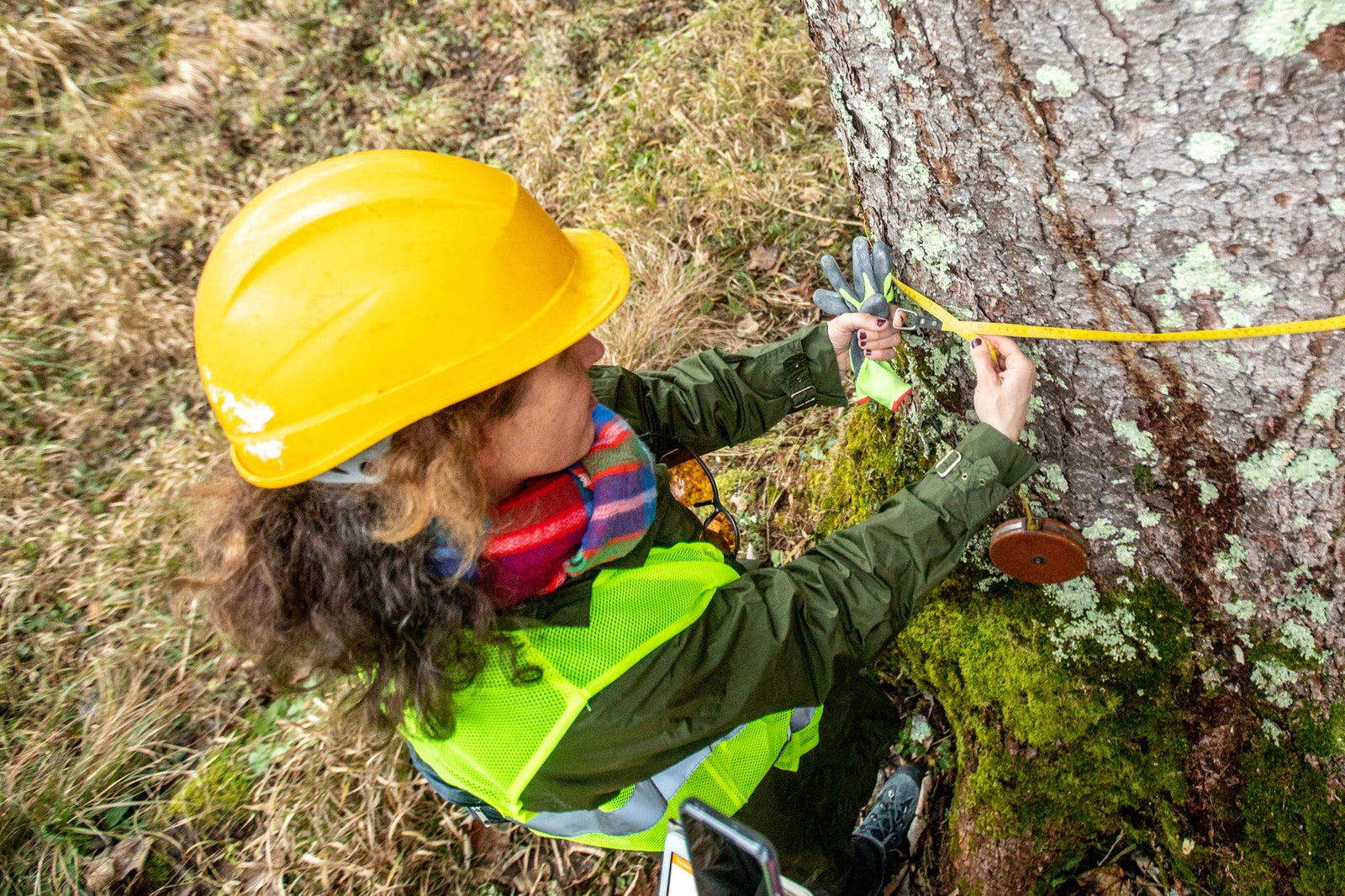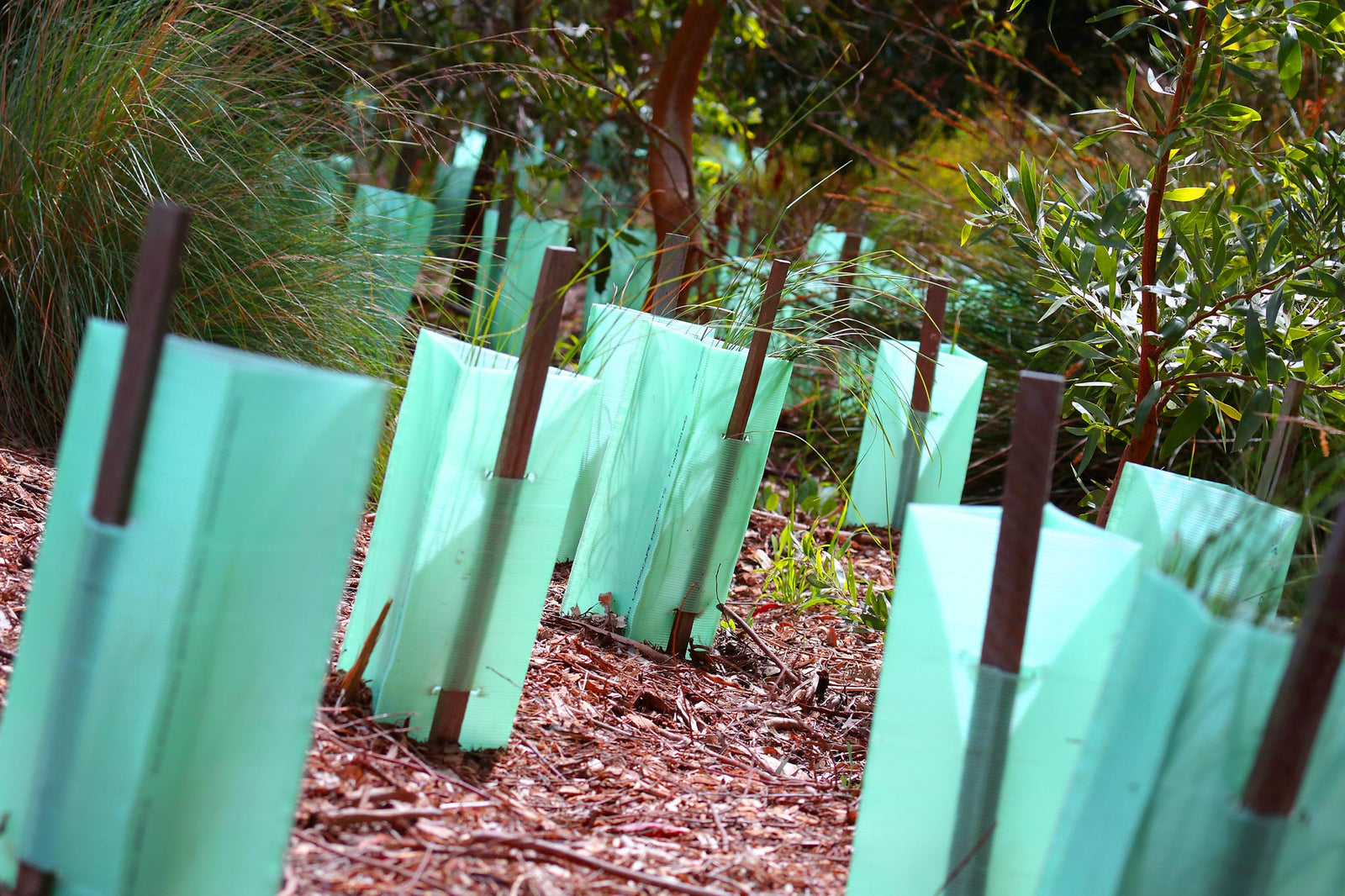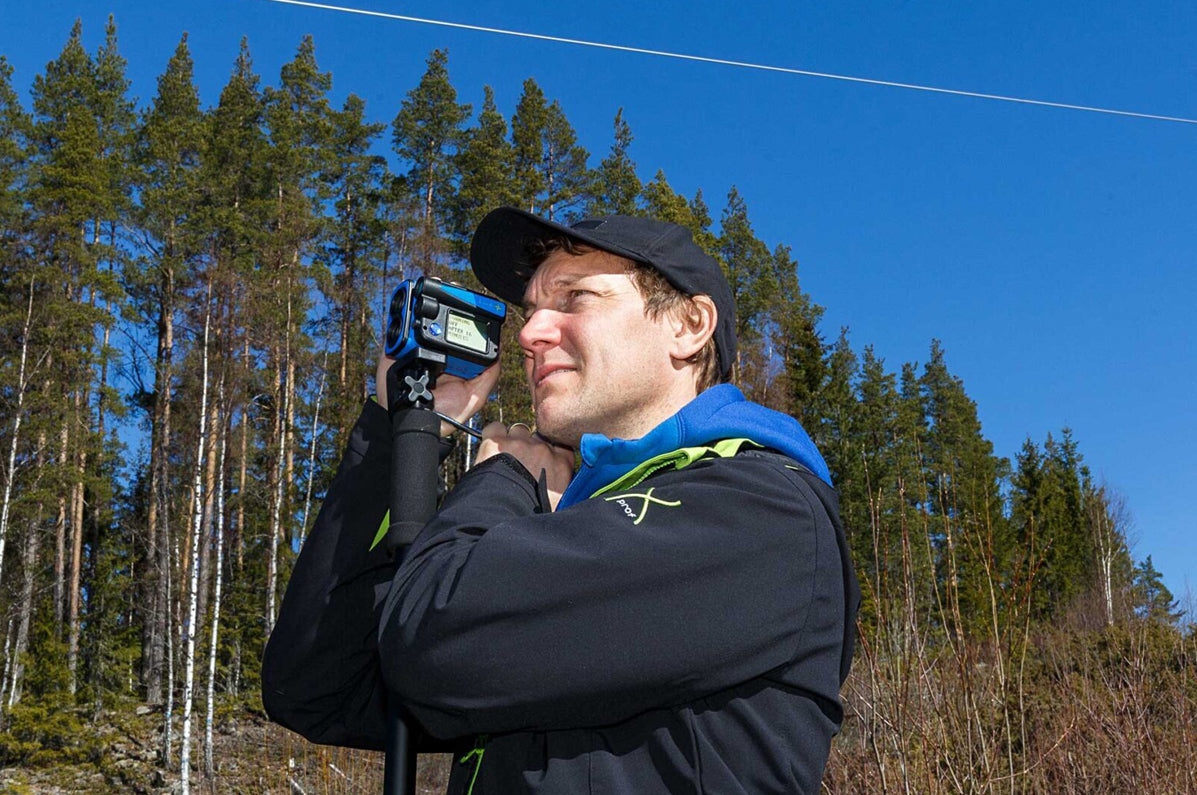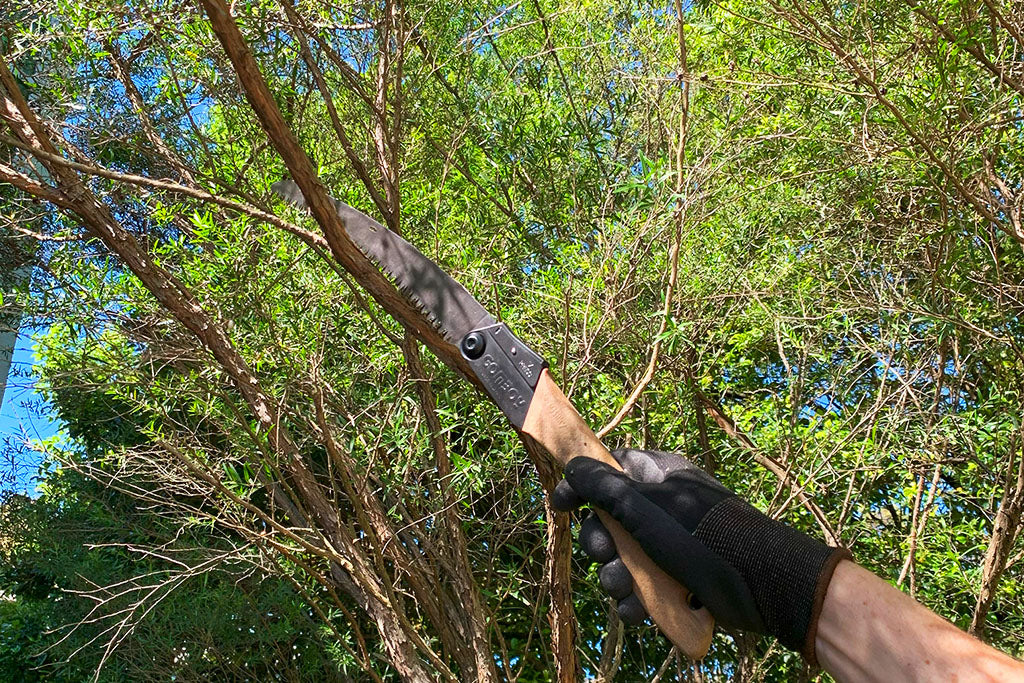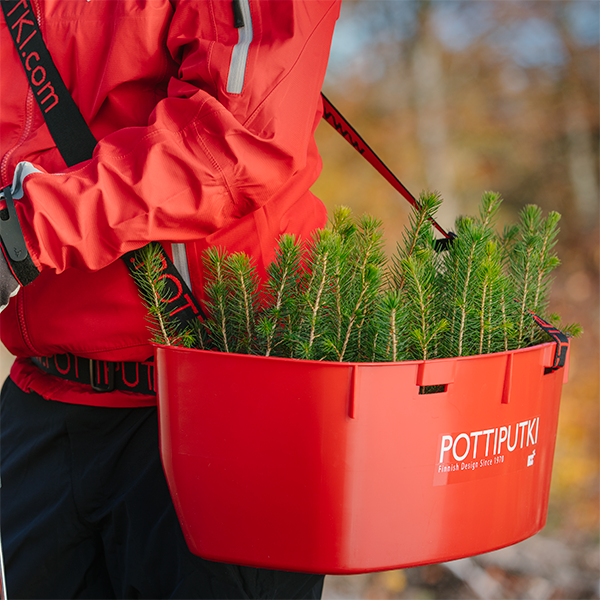The height of trees may need to be measured for several different reasons. Tree height is a key variable for estimating tree biomass and investigating tree life history, but it is difficult to measure in forests with tall, dense canopies and wide crowns. Tree heights have long been measured as part of efforts to quantify timber resources and also more recently for forest carbon stock. In addition, tree height measurement is needed within ecological studies characterising life histories of individual tree species and populations. In some cases it is also necessary to measure tree heights to determine if the tree poses a safety risk to people and/or property. However, measuring the height of trees is more complex than simply measuring diameter or girth as you can’t just run a tape up a 30m tree! We will discuss several tree height measurement methods, from simple trigonometry that will provide a good indication of tree height to advanced ultrasonic and laser height meters that will measure height to within a few centimetres.

Tangent Height Gauge Method
The tangent height gauge is a simple but effective tool for measuring tree heights. It does not require complex trigonometry and is a fantastic teaching aid for determining approximate heights quickly. Follow the directions below to use a tangent height gauge:
- Walk back from the tree until you can see the top of the tree through the sight, keeping the level bubble centred
- Measure the distance from you to the base of the tree (= D)
- Measure your height to eye level (= H)
- Height of the tree = D + H
For example, you walked away from the tree and kept the level bubble centred. The distance between you and the tree was 5 metres (D), and your height up to eye level is 1.7 metres (H). Therefore, the tree's height would be D + H (5m + 1.7m), which is 6.7 metres. This assumes the ground is level from your measuring position to the base of the tree.
Clinometer Method:
Hand-held clinometers are precision instruments used worldwide by surveyors, engineers, cartographers, geologists, miners and architects and many others to measure heights, vertical angles and slopes quickly and easily. The clinometer method is more accurate in comparison to the tangent height gauge but requires a little more mathematical work. There are two different methods when using a clinometer.
Method 1: Using the Clinometer’s % scale
- Walk back a distance from the tree until you can easily see the top and bottom (Distance)
- Look through the sight keeping both eyes open and align the line in the instrument with the top of the tree. Take note of this reading. (Reading A)
- Look through the sight keeping both eyes open, and align the line in the instrument with the tree's base. Take note of this reading. (Reading B)
- If your eye level is above the base of the tree, you add Reading A and Reading B. You then multiply it by the distance.
- If your eye level is below the base of the tree, you subtract Reading B from Reading A. You then multiply it by the distance.
For example, you are 10 metres away from a tree whose base is above eye height. The reading to the top of the tree (Reading A) is 70%, and the reading to the base is 5% (Reading B). You will subtract the base reading from the top reading, 70%-5% = 65%. Therefore, the tree's height is 10 metres x 65% = 6.5 metres.
Method 2: Using the Clinometer’s Degree Scale and Trigonometry
- Walk back a distance from the tree until you can easily see the top and bottom (Distance)
- Read off the angle in the clinometer whilst looking at the top of the tree. Record this angle of elevation.
- Then calculate the tree height above your eye level using the tan method. The height should be equal to your distance from the tree multiplied by tan (angle of elevation)
- Repeat this procedure whilst looking down at the base of the tree (so the height from eye level to the base), and then either add or subtract this reading to the first depending upon whether the base of the tree is below or above your eye level..
For example, if you are standing 5 metres away from the tree and your angle of elevation using the clinometer is 60 degrees to the top of the tree, then the height of the tree above your eye level is equal to 5 multiplied by tan(60°) = 8.66 metres. If the base of the tree is below your eye level and the angle to the base was 10 degrees, then the height from your eye level to the base of the tree would be 5 multiplied by tan(10°) = 0.88 metres
Therefore, the height of the tree is 8.66m + 0.88m = 9.54m
Electronic Clinometer & Height Meter
An electronic clinometer and height meter can simplify the tree-measuring process significantly without the need to measure the distance from the tree and complete mathematical equations. The Haglof ECII-D electronic clinometer/height meter allows you to measure the heights and inclinations you need and then shows the results directly on an electronic display. It uses a two-metre reference mark on the tree to calculate the distance to the tree and the tree's height using an in-built electronic clinometer and internal trigonometric calculations.
It is easy to use with three simple clicks as follows:
- Measure two metres from the base of the tree and place a visible mark on the tree you will be able to see from a distance, such as by marking with an “X” with bright crayon.
- Walk back until you can see the top of the tree.
- Aim the electronic clinometer at the bottom of the tree and click the button once.
- Aim the electronic clinometer at the two-metre mark of the tree and click the button once.
- Aim the electronic clinometer at the top of the tree and click the button once
- The height of the tree will be shown on the internal display.
Laser Height Meter
A laser height meter is a step up from the electronic height meter as it doesn’t require reference point marking. The Nikon Forestry Pro II uses a laser to calculate the distance to the tree and then an internal inclinometer to measure the angle to the base and top of the tree. The results are displayed on both internal and external LCD panels instantaneously, and the clinometer can store up to 250 measurement logs. There are a number of options available for measuring the height, but the 3-point is the most accurate and straightforward as follows:
- Walk back from the tree where both the top and base are visible.
- Aim straight ahead at the trunk of the tree and press the button to measure.
- Aim at the bottom of the tree and press the button to measure.
- Aim at the top of the tree and press the button to measure.
- The tree height and distance results will be displayed on the screen.
Ultrasonic and Laser Height Meter
The Haglof Vertex Laser Geo is the most advanced measurement system offering both laser and ultrasonic technology to calculate distance and height. It is used by professionals worldwide in various roles, including forestry, surveying, engineering, landscaping, architecture, and construction. This is because the instrument offers accurate and efficient field measurements in different situations, terrains, climates and surroundings. The ultrasonic mode allows measurements to be taken in thick scrub when the base of the tree can't be easily seen, whereas the laser mode provides for quick and easy measurements when you have a line of sight. The Haglof Vertex Laser Geo is the most accurate of all instruments mentioned, with a measuring accuracy within centimetres. In addition, it has a built-in GPS, a 5-position numeric ID attribute to tag important data with coordinates and an integrated compass sensor allowing for accurate 3D measurements. It features a plethora of other uses, such as building a map trail, 3D mapping, 3D vectors, using GPS to measure areas and bluetooth transfer to a computer. We recommend referring to the manual for measuring tree height, depending on your laser or ultrasonic technology choice.
Overall, there are a number of ways to measure tree height, and the tool you decide to use will be a trade-off between cost, simplicity and accuracy. For beginners who are after approximations and have a very small budget, we recommend the Tangent Height Gauge. For better accuracy, you have the mid-range options of different height meters. For professionals who need accuracy within the range of a couple of centimetres, the Haglof Vertex and Laser Geo instruments are the preferred choice.



